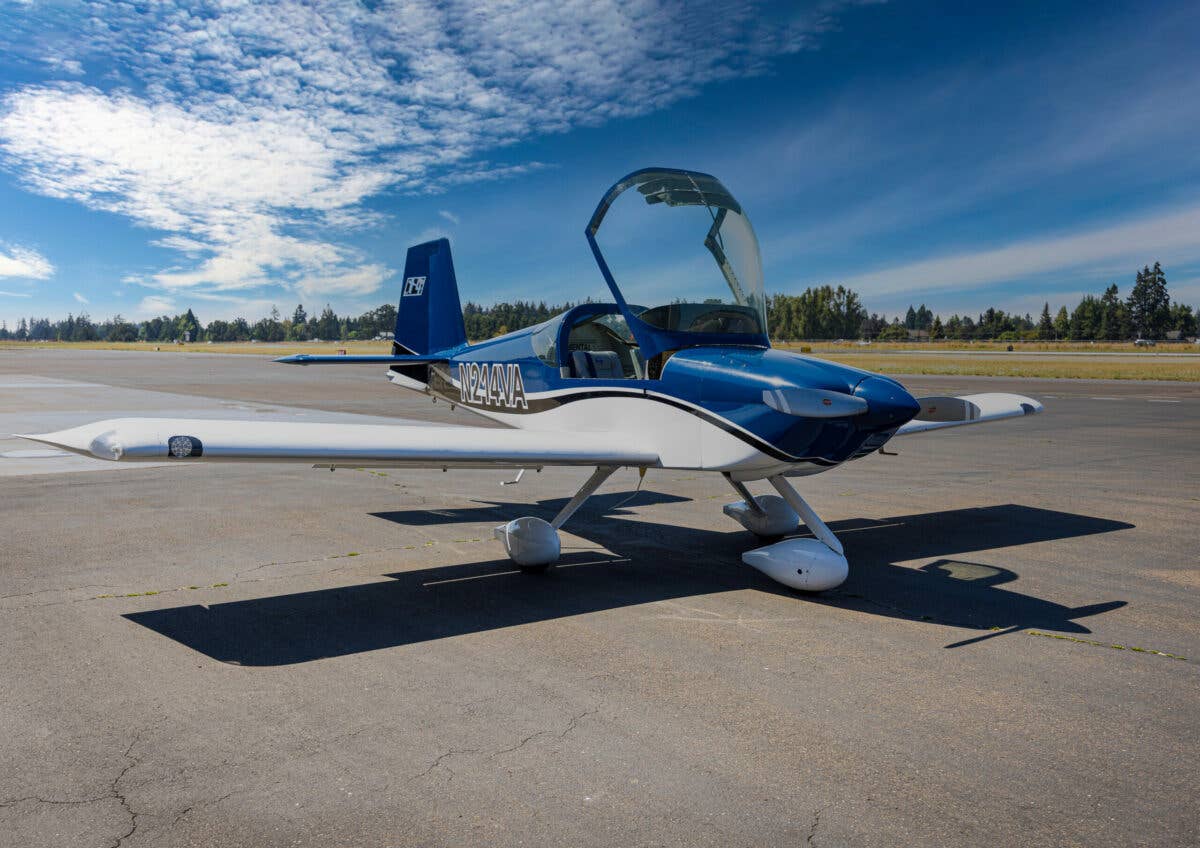Van’s Aircraft, 50 Years in the Making
A maker of kits creates a golden opportunity for new and returning builders.

A maker of kits creates a golden opportunity for new and returning builders. [Credit: Stephen Yeates]
The pallets stack high inside the inventory hangar. Crates ready to be filled with kits line the ramp outside. It feels callous to say the pandemic resulted in any good consequences, but one was undoubtedly felt by Van’s Aircraft: Pilots stayed home—and built airplanes. The experimental/amateur-built (E/AB) category of aircraft saw intense growth as homegrown projects—and the ability to isolate in a hangar while doing them—took on a new shine. Instead of making jam and nurturing sourdough starter, hundreds of new builders “fermented” aircraft across the U.S.
During the year marking its 50th anniversary, Van’s worked hard to catch up. Facing workforce and supply chain ups and downs that have plagued the entire industry, the Aurora, Oregon-based OEM added shifts and placed orders on backlog from 12 to 18 months. The company managed to stockpile some key materials—such as the gauges of aluminum it bends and stamps into pre-built parts—yet it still waits on others, from the wood to build crates to the avionics finishing kits.
For most of its business, Van’s designs and builds kits—and in the case of the SLSA version of the RV-12, manufactures the aircraft itself. Greg Hughes, chief operating officer, has been with the company since 2018. He says of the RV-12: “It’s not like we’re building a different airplane there—we’re just building the same kit that you would.”
Hughes attributes the company’s mission to Rian Johnson, president, chief engineer, and CTO, who is known to state often: “We reserve the right to get better,” according to Hughes. “That’s part of our ongoing commitment to quality, safety, and just general product [development] over time. If we discover something that we need to do better, we do it. It’s not a ‘head in the sand’ kind of game.”
The real growth of Van’s began with the single-seat RV-3, as Richard “Dick” VanGrunsven, aka "Van," laid the foundation for the company selling plans and parts for the model. Van’s has since seen the RV-4, RV-6, RV-7, RV-8, RV-9, RV-10, RV-12, and RV-14 launched over the years—but not necessarily in that order. The RV-5 was a one-off, as Hughes explains.
“We have refined [the kits] significantly over time,” Hughes says. “So if you go find an RV-3 kit, it’s pretty much a paper plans-built model.” It’s a fundamental, basic kit that’s “circa 1970s, early 80s.” The RV-6 morphed over time—Van’s no longer sells them—and the RV-7 replaced it. “It changed over time to take on pre-punched holes. The RV-7 actually came after the RV-8—the 8, 9, and 7 taking on more pre-punched holes.”
Since moving from the airpark in North Plains, Oregon, that the VanGrunsven built to the Aurora State Airport (KUAO) south of Portland, the company has expanded significantly to meet demand. As of October 2022, more than 11,000 Van’s Aircraft have been completed and flown. More than 400 kits go out the door each year.
"We'll have people come by here and take a tour because they’ve been flying the airplane for 20 years, but they’ve never been here," Hughes says.
The kits come with detailed instructions that have been refined extensively over the decades, culminating in a process to follow that lays it out step by step—so it's approachable for a new builder.
"The whole point of E/AB is to …50 percent of it is educational. Half the reason for E/AB is the opportunity to learn. And what you learn along the way, you learn by doing," Hughes says. "Our mission is to build an incredible airplane… An uncommon airplane for common owners that's really good at a wide cross-section of things."
"We want to do what we can to make it approachable, affordable, and doable for the average person," Hughes says. "You don't have to have special training to build an RV."

Sign-up for newsletters & special offers!
Get the latest FLYING stories & special offers delivered directly to your inbox






